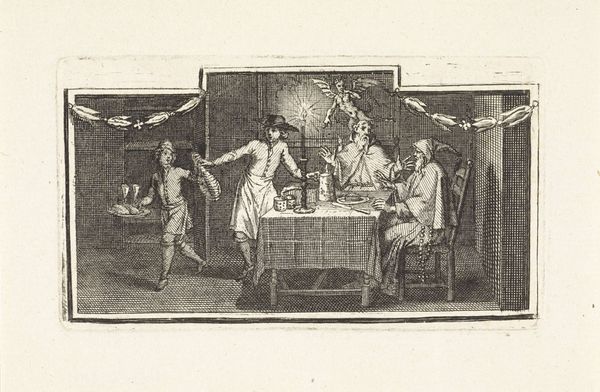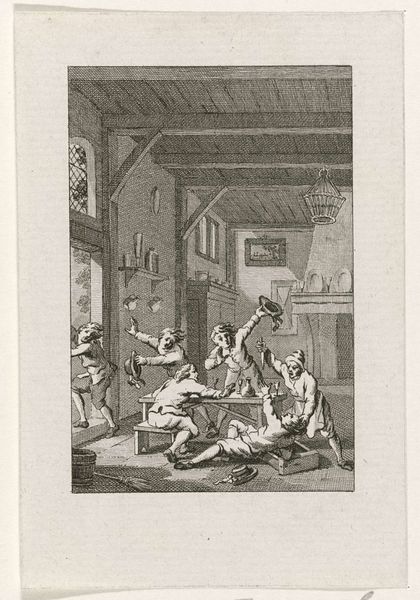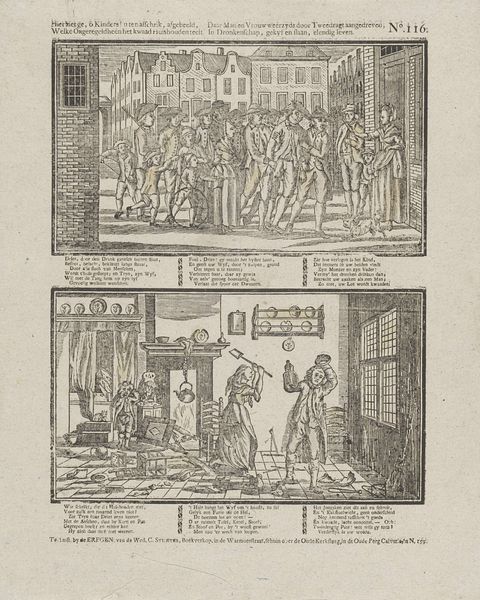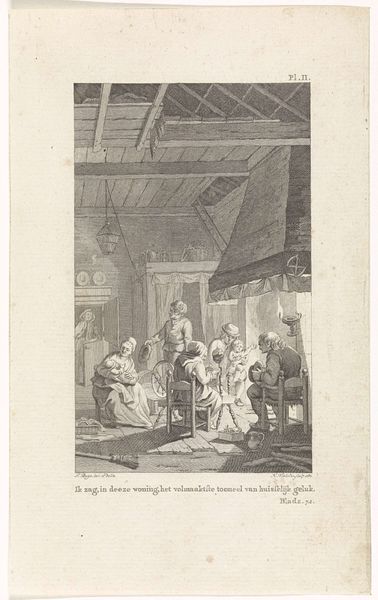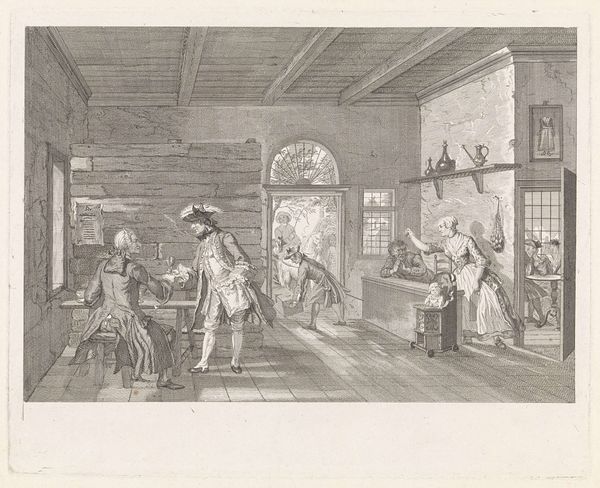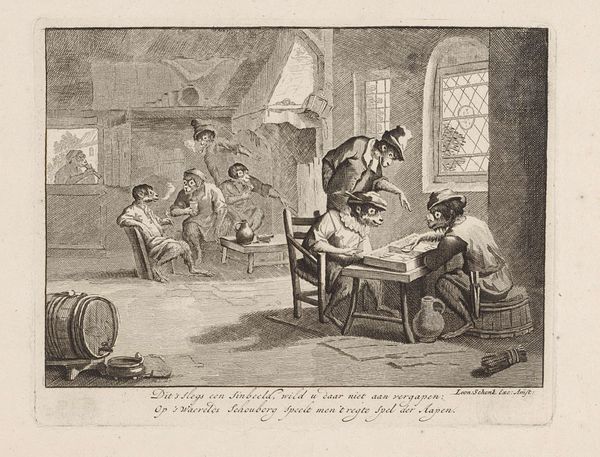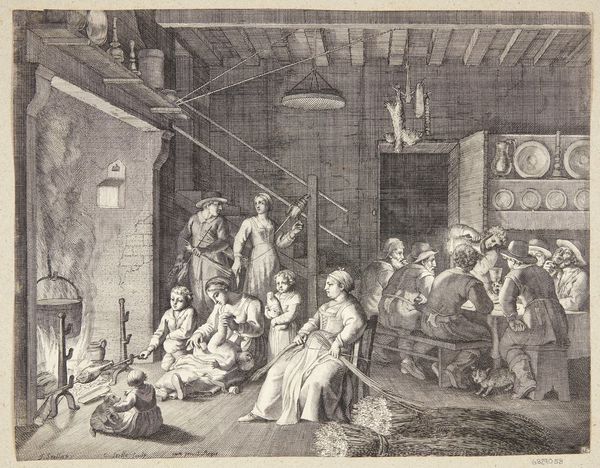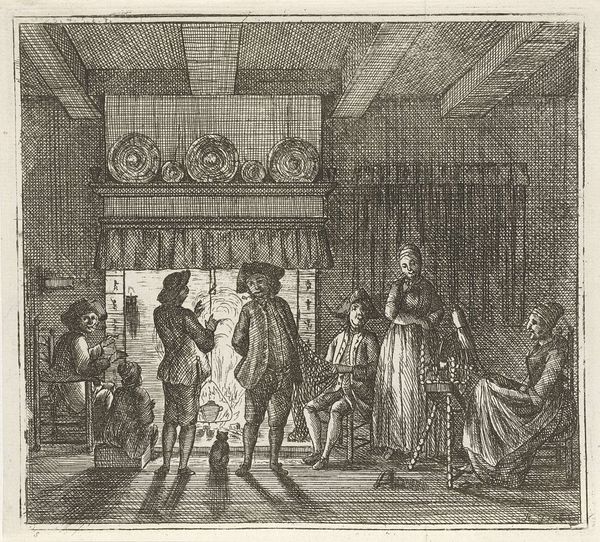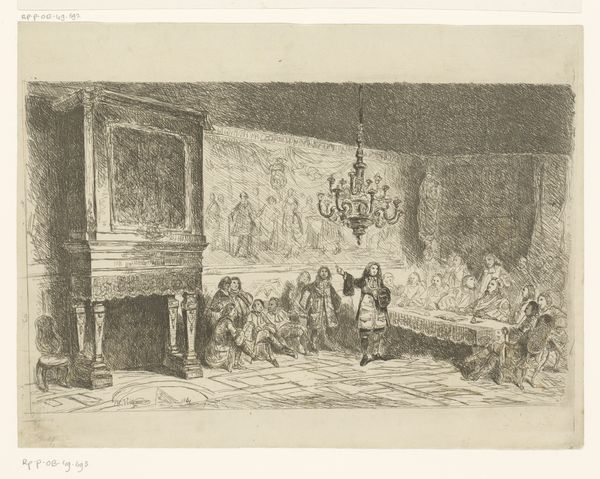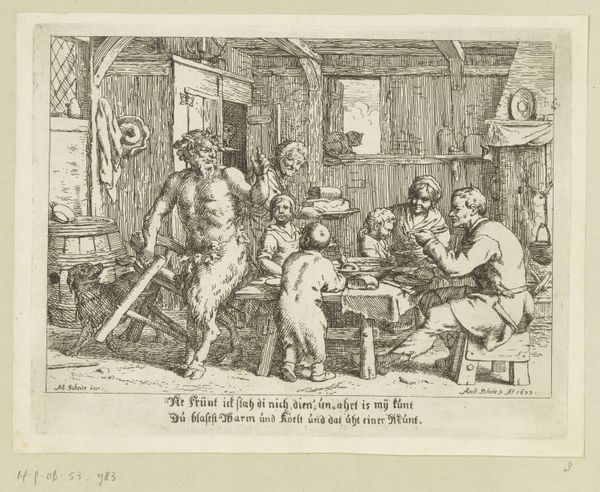
Dimensions: height 83 mm, width 108 mm
Copyright: Rijks Museum: Open Domain
Curator: Ah, this etching, "Interieur van een herberg" – "Interior of a Tavern" – attributed to Anthonie van den Bos, captures a bustling scene from between 1778 and 1838. What’s your immediate take on it? Editor: It has this muted quality to it, quite literally— the monochrome lends it an air of the clandestine. The mood, it suggests revelry happening, perhaps illicitly, under the cloak of night or away from public eyes. Curator: Interesting. Considering it as a genre painting, these taverns served as important social spaces. Who occupied them, how did that shape dynamics around class, gender, and even political affiliations during that time? What were the unspoken rules dictating these social interactions? Editor: Absolutely. The tavern becomes this almost liminal space where societal structures can be both reinforced and subverted. If we really look at the scene, there are indicators: clothing and adornments would certainly highlight one's economic access. Look at the production of this print— etching— a means of making art more accessible than a painting perhaps, indicative of changing patterns of labor and consumption during this period. Curator: True. Van den Bos employed etching which allowed for the mass reproduction of imagery, expanding its reach beyond the elite circles that usually commissioned artwork. What kind of politics are inherently embedded in the move toward broader circulation? Editor: I am particularly interested in its use of the etching process. It’s interesting to observe how the means of production has facilitated distribution, offering insights into changing production, labor, and markets of images themselves. Curator: Examining those choices is very important when trying to place artworks in larger historical and cultural frameworks and analyze their role. What narratives might they perpetuate or, on the other hand, challenge? Editor: In my view, this approach invites new insights. I see a new understanding of cultural productions through a lens grounded in making and materiality, shifting emphasis from purely aesthetic consideration. Curator: It provides important avenues for looking beyond just visual analysis. Editor: Agreed, recognizing this offers a tangible route towards understanding these prints' engagement with viewers.
Comments
No comments
Be the first to comment and join the conversation on the ultimate creative platform.

